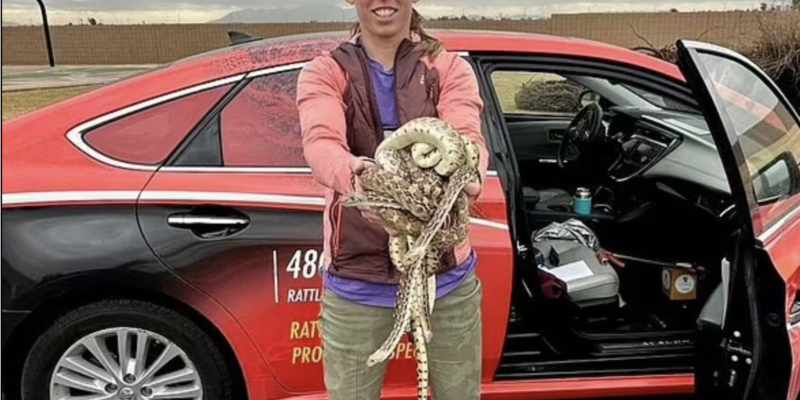
A homeowner in Arizona heard a noise coming from her water heater. When he looked behind the tank, he nearly screamed and started running before calling the authorities.
“A man in Arizona suspected that three rattlesnakes were hiding in his garage, but the reality was far worse. A snake catcher arrived at the man’s home in Mesa and discovered there were actually 20 rattlesnakes in the garage.
On Tuesday, Marissa Maki, a snake wrangler, found most of the rattlers coiled around the hot water heater in a cluttered garage. She picked them up in clumps with her tongs.
‘That is a lot of snakes,’ Maki said. ‘I’m not going to lie, this is crazy. I’m guessing more than one of these (adults) was a mom that had babies.’
According to Maki, there were five adult western diamondback rattlesnakes, 15 babies, and one of the adults was pregnant. She also found a gap in the garage door’s lower part, allowing snakes to come and go freely,” writes USA Today.
Rattlesnake Solutions, the company that helped the poor man out, writes that “snakes are part of living in the desert. We see them on our hiking trails, out camping and hiking, and sometimes even right in our own backyard. They can be found in every area of even metro areas like Phoenix and Tucson, from the furthest outskirts to older neighborhoods downtown. Anyone who lives in Arizona will most likely encounter a snake at some point.”
The company claims that snake encounters don’t have to be scary.
“One thing is very clear from our years of working with Arizona snakes and the people who see them; much of the danger associated with them is undeserved. Our mission is to help separate fact from fiction, relocate when necessary, and educate always.”
The diamondback rattlesnake, specifically the Western Diamondback Rattlesnake (Crotalus atrox), stands as an iconic and formidable reptile. These serpents are well adapted to the harsh desert conditions of the state, where they can be found in a variety of habitats, including deserts, grasslands, and rocky outcrops. Their distinctive diamond-shaped patterns and well-developed rattles make them easily recognizable, serving as a warning to potential predators and curious humans.
In Arizona, encounters with diamondback rattlesnakes are relatively common, especially in the warmer months when they are more active. While these snakes are venomous and possess a potent venom that aids in capturing prey, they are not inherently aggressive towards humans. Instead, they prefer to rely on their cryptic coloration and rattling as a defensive strategy, often striking only when they feel threatened or cornered. Nonetheless, their presence in Arizona’s ecosystems is a testament to the fascinating and diverse wildlife that thrives in the state’s challenging desert environments.









